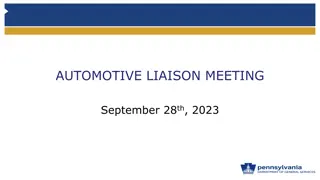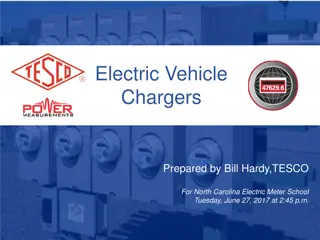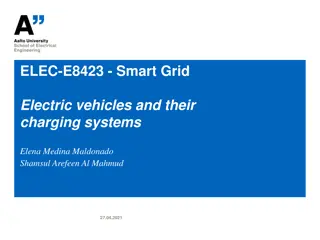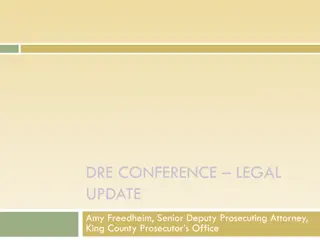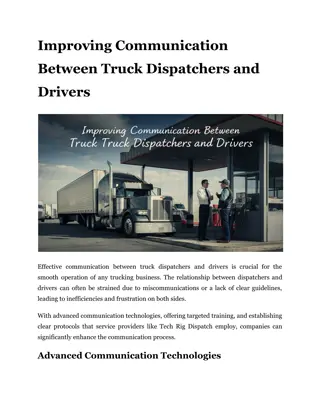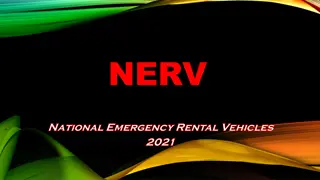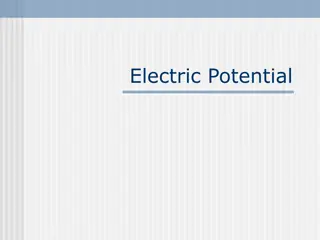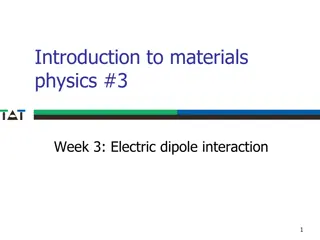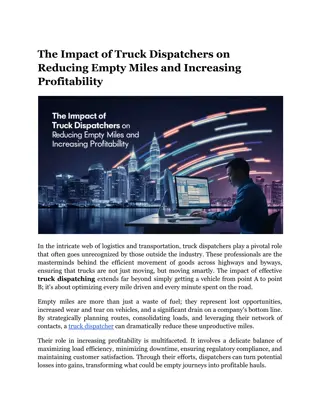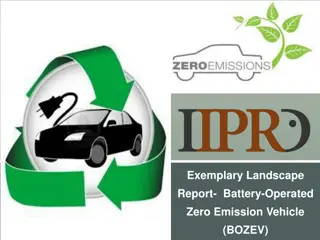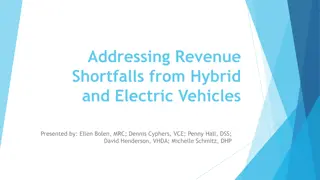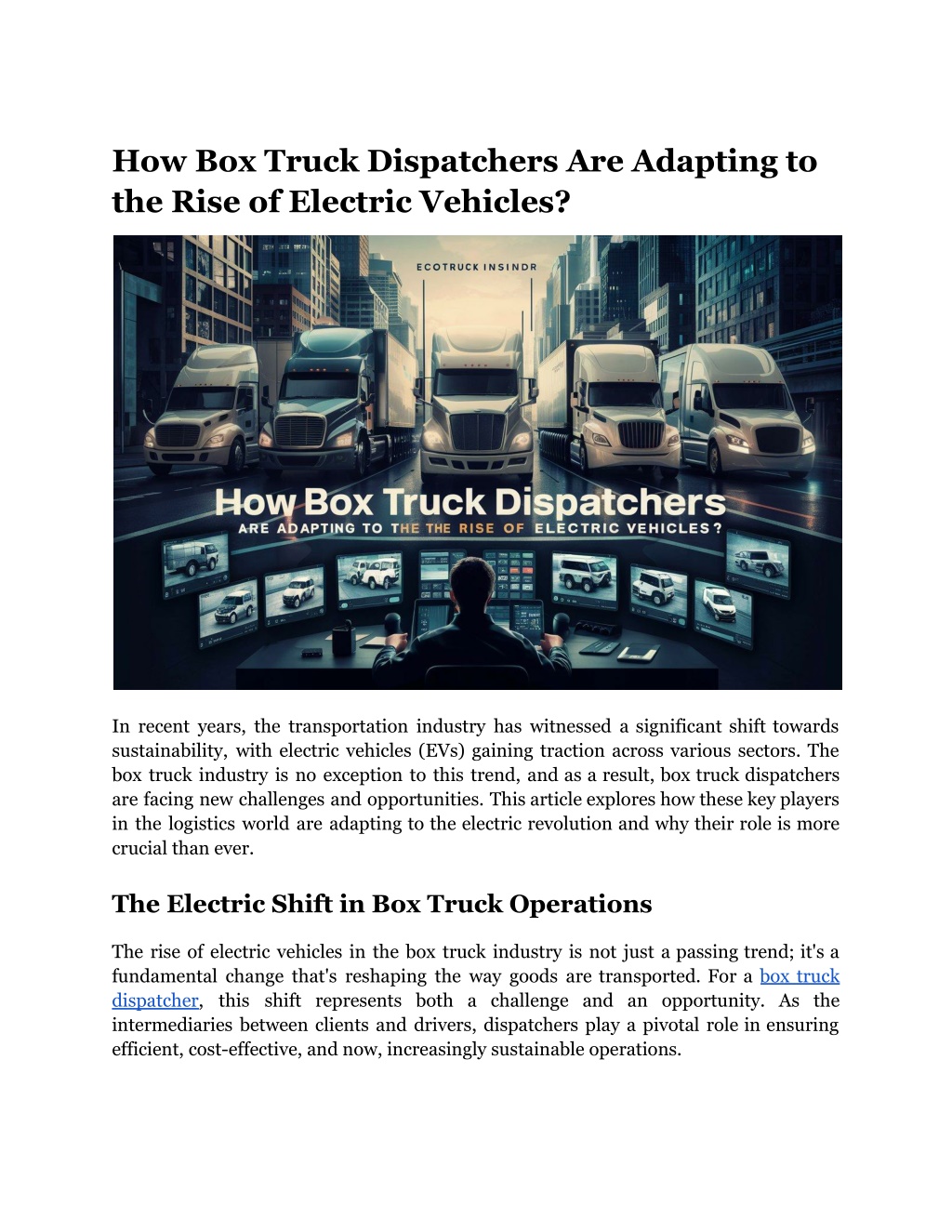
How Box Truck Dispatchers Are Adapting to the Rise of Electric Vehicles?
Discover how box truck dispatchers adapt to electric fleets, tackling new logistics, efficiency, and sustainability challenges.
Download Presentation

Please find below an Image/Link to download the presentation.
The content on the website is provided AS IS for your information and personal use only. It may not be sold, licensed, or shared on other websites without obtaining consent from the author. Download presentation by click this link. If you encounter any issues during the download, it is possible that the publisher has removed the file from their server.
E N D
Presentation Transcript
How Box Truck Dispatchers Are Adapting to the Rise of Electric Vehicles? In recent years, the transportation industry has witnessed a significant shift towards sustainability, with electric vehicles (EVs) gaining traction across various sectors. The box truck industry is no exception to this trend, and as a result, box truck dispatchers are facing new challenges and opportunities. This article explores how these key players in the logistics world are adapting to the electric revolution and why their role is more crucial than ever. The Electric Shift in Box Truck Operations The rise of electric vehicles in the box truck industry is not just a passing trend; it's a fundamental change that's reshaping the way goods are transported. For a box truck dispatcher, this shift represents both a challenge and an opportunity. As the intermediaries between clients and drivers, dispatchers play a pivotal role in ensuring efficient, cost-effective, and now, increasingly sustainable operations.
The importance of this shift for dispatchers cannot be overstated. With electric box trucks comes a new set of variables to consider, from range limitations to charging infrastructure. Dispatchers must now think beyond traditional fuel consumption and adapt their strategies to accommodate the unique characteristics of EVs. Route Planning and Optimization for EVs One of the most significant changes for dispatchers is the need to rethink route planning. With electric vehicles, the old saying of "the shortest distance between two points" doesn't always apply. Dispatchers must now consider: Battery range and efficiency Location and availability of charging stations Charging time required at each stop To address these new variables, many box truck dispatchers are turning to advanced software solutions. These tools incorporate EV-specific data to optimize routes, ensuring that trucks can complete their deliveries without running out of charge. Some dispatchers report that this new approach to routing has led to unexpected efficiencies. Fleet Management Challenges Managing a fleet of electric box trucks presents unique challenges for dispatchers. They must now monitor battery levels in real-time, schedule charging sessions, and coordinate maintenance specific to EVs. This requires a more dynamic approach to fleet management, with dispatchers often needing to make quick decisions based on changing energy levels and charging availability. Many box truck dispatch teams are implementing new fleet management systems that provide detailed insights into each vehicle's status. These systems allow dispatchers to anticipate potential issues and make proactive decisions, such as rerouting a truck with a low battery to a nearby charging station or swapping out vehicles to ensure timely deliveries. Training and Skill Development for Dispatchers The transition to electric box trucks has necessitated a significant investment in training and skill development for dispatchers. Many companies are now providing specialized courses covering: EV technology basics
Energy management strategies Advanced route planning for electric fleets Troubleshooting common EV issues Box truck dispatchers are finding that their role is evolving to include elements of energy management and technical support. Cost Management Considerations While electric box trucks often have lower operational costs in the long run, managing these costs requires a different approach. Dispatchers are now tasked with: Monitoring electricity rates and planning charging times accordingly Balancing the higher upfront costs of EVs with long-term savings Coordinating with finance teams to track and report on new cost metrics Some box truck dispatch teams have found success in implementing dynamic pricing models that account for the variable costs associated with EV operation. This allows them to maintain competitive pricing while ensuring profitability in the face of new cost structures. Environmental Impact Tracking As sustainability becomes a key concern for many businesses, box truck dispatchers are increasingly responsible for tracking and reporting on environmental impact. This includes: Calculating carbon emissions saved through EV use Monitoring and reporting on energy consumption Assisting in the preparation of sustainability reports for clients and stakeholders Many dispatchers find that this new aspect of their role allows them to contribute directly to their company's sustainability goals, adding a sense of purpose to their work. Customer Communication Strategies The shift to electric box trucks has also impacted how dispatchers communicate with customers. They now need to: Educate clients on the benefits and limitations of EV deliveries
Manage expectations regarding delivery times, which may be affected by charging needs Highlight the sustainability benefits of choosing EV transport options Some box truck dispatchers have reported increased customer satisfaction as they effectively communicate the environmental benefits of EV deliveries, particularly among eco-conscious clients. Overcoming Challenges While the transition to electric box trucks presents numerous benefits, it's not without its challenges. Dispatchers are at the forefront of addressing issues such as: Range anxiety: Carefully planning routes to ensure trucks don't run out of charge mid-delivery Weather considerations: Accounting for how extreme temperatures can affect battery performance Charging infrastructure limitations: Working around areas with limited charging options Innovative dispatchers are finding creative solutions to these challenges. For example, some are partnering with local businesses to set up charging points along common routes, while others are implementing battery swap programs for longer journeys. Final Thoughts The transition to electric box trucks represents more than just a change in vehicle type. It's a shift towards a more sustainable, efficient, and technologically advanced logistics industry. Box truck dispatchers are at the heart of this transformation, playing a crucial role in ensuring the success of EV integration in last-mile delivery and beyond. For those looking to stay ahead of the curve in box truck dispatch, it's essential to invest to join hands with professionals. Tech Rig Dispatch offers state-of-the-art dispatch solutions. To learn more about their solutions and platform, which can help you navigate the electric future of box truck dispatch, visit our website. FAQs How does the range of electric box trucks compare to traditional fuel-powered trucks?
Electric box trucks typically have a shorter range than their diesel counterparts, usually between 100-250 miles on a single charge, compared to 400-500 miles for diesel trucks. However, this range is constantly improving with advancements in battery technology. What new skills do box truck dispatchers need to develop for managing electric fleets? Dispatchers need to develop skills in energy management, EV route optimization, charging infrastructure knowledge, and basic EV troubleshooting. They also need to enhance their data analysis skills to interpret EV-specific metrics. How do weather conditions affect electric box truck operations? Extreme temperatures, both hot and cold, can affect battery performance and range. Box truck dispatchers need to factor this into their planning, potentially adjusting routes or scheduling more frequent charging stops in severe weather conditions. Site Article: How Box Truck Dispatchers Are Adapting to the Rise of Electric Vehicles?



